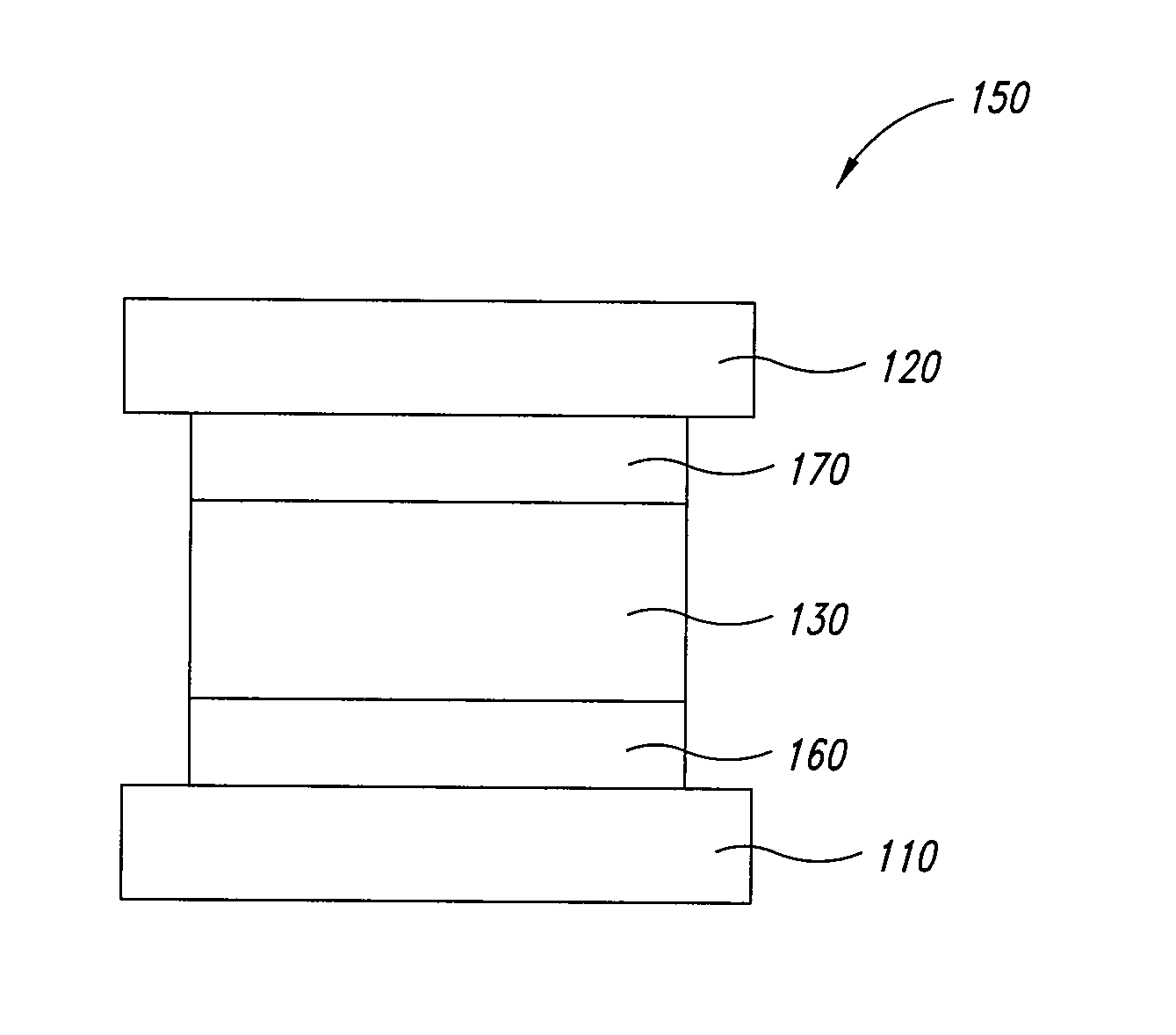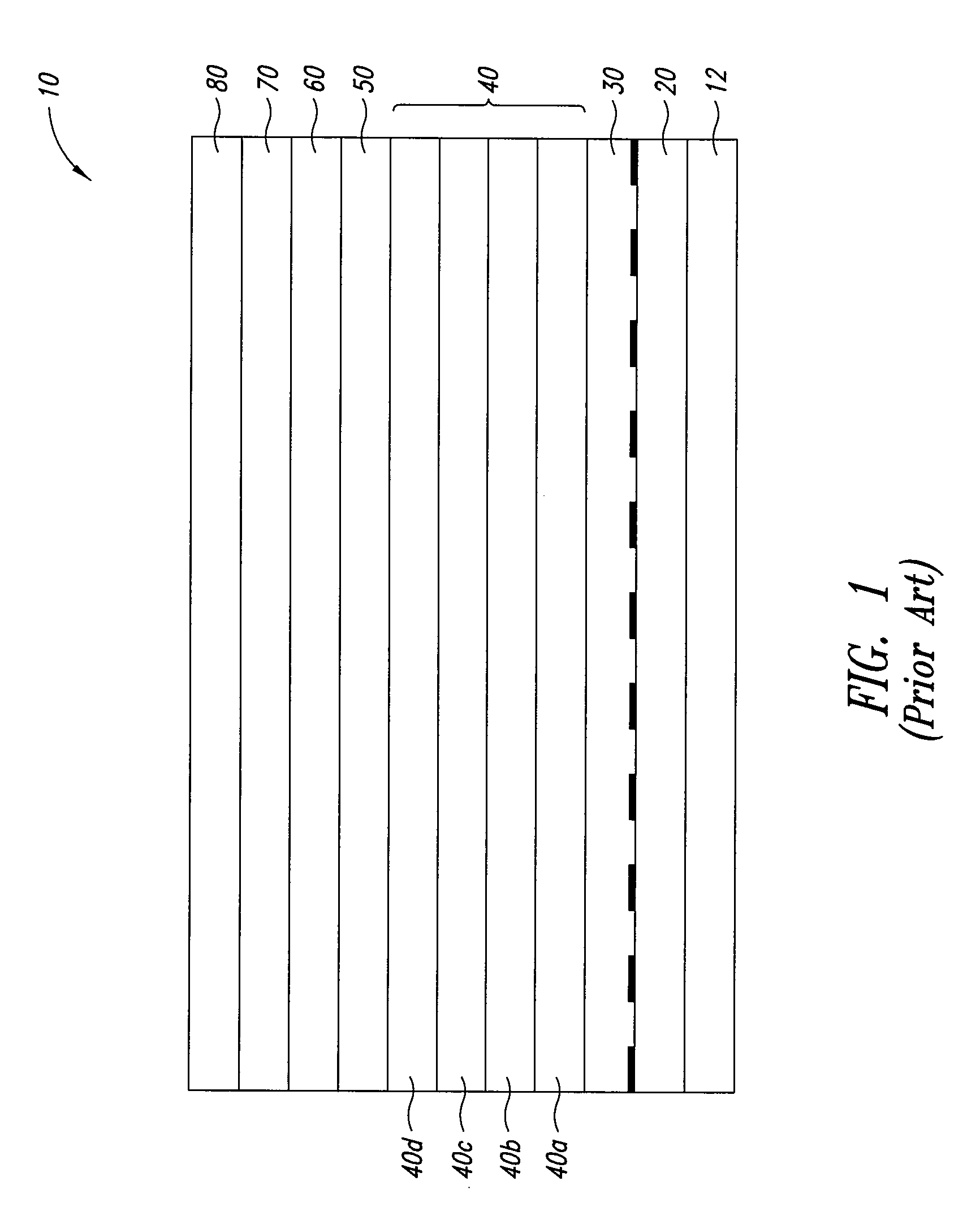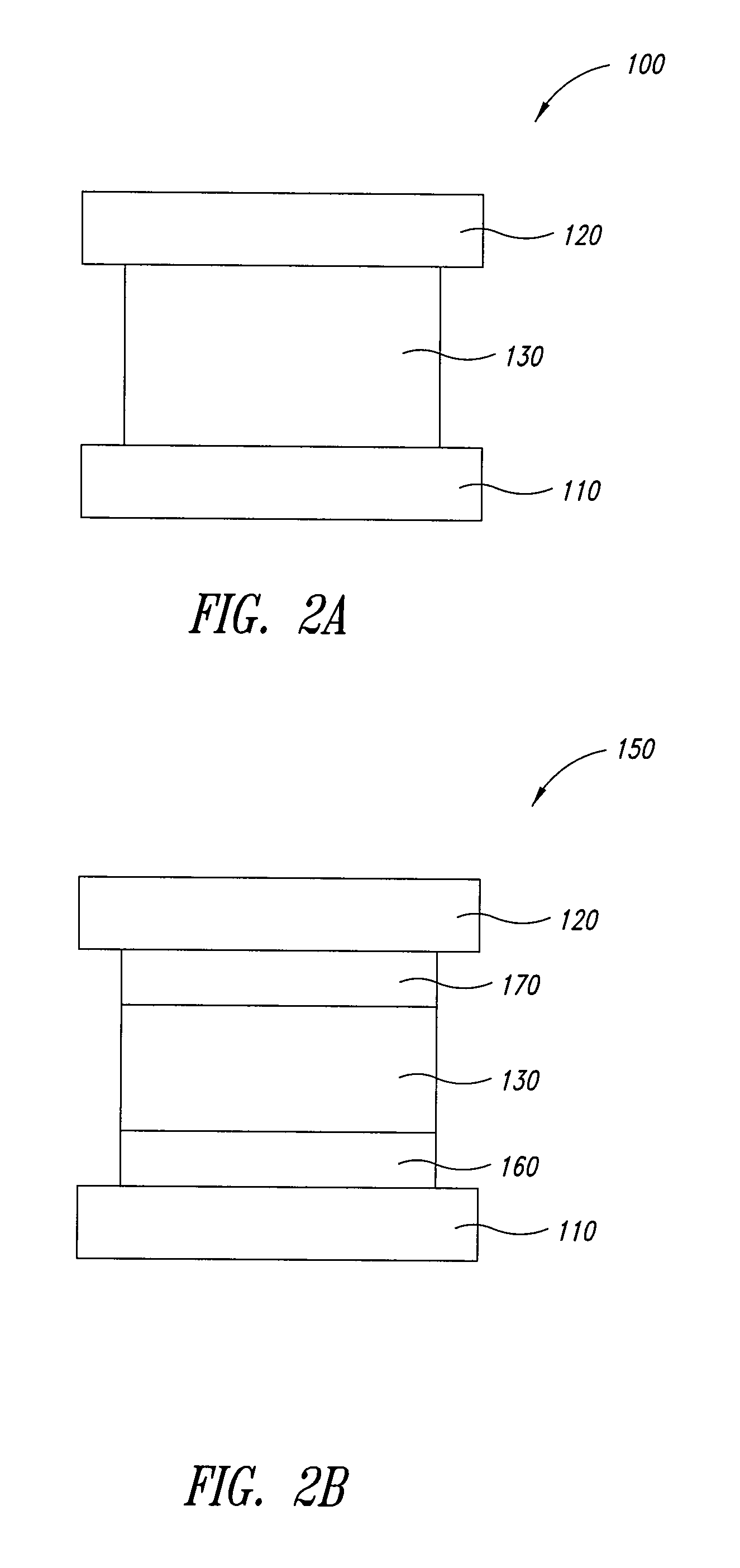Nanostructure-based transparent conductors having increased haze and devices comprising the same
a transparent conductor and nanostructure technology, applied in the direction of non-metal conductors, conductive layers on insulating supports, instruments, etc., can solve the problems of limited application, low light transmission and high haze, and high light scattering, so as to improve device performance, increase haze/light scattering, and different and tunable degrees of scattering
- Summary
- Abstract
- Description
- Claims
- Application Information
AI Technical Summary
Benefits of technology
Problems solved by technology
Method used
Image
Examples
example 1
Synthesis of Silver Nanowires
[0088]Silver nanowires were synthesized by the reduction of silver nitrate dissolved in ethylene glycol in the presence of poly(vinyl pyrrolidone) (PVP) following the “polyol” method described in, e.g., Y. Sun, B. Gates, B. Mayers, & Y. Xia, “Crystalline silver nanowires by soft solution processing,”Nanoletters 2(2): 165-168, 2002. A modified polyol method, described in co-pending and co-owned U.S. patent application Ser. No. 11 / 766,552, produces more uniform silver nanowires at higher yields than does the conventional “polyol” method. This application is incorporated by reference herein in its entirety. Resulting nanowires primarily had lengths from about 13 μm to about 17 μm and diameters from about 34 nm to about 44 nm.
example 2
Standard Preparation of Ink Composition of Conductive Nanostructures
[0089]A typical ink composition for depositing metal nanowires comprises, by weight, from 0.0025% to 0.1% surfactant (e.g., a preferred range is from 0.0025% to 0.05% for ZONYL® FSO-100), from 0.02% to 4% viscosity modifier (e.g., a preferred range is 0.02% to 0.5% for hydroxypropyl methylcellulose (HPMC), from 94.5% to 99.0% solvent and from 0.05% to 1.4% metal nanowires. Representative examples of suitable surfactants include ZONYL® FSN, ZONYL® FSO, ZONYL® FSA, ZONYL® FSH, Triton (x100, xl 14, x45), TERGITOL®, DYNOL® (604, 607), n-dodecyl β-D-maltoside, and NOVEC®. Examples of suitable viscosity modifiers include hydroxypropyl methyl cellulose (HPMC), methyl cellulose, xanthan gum, polyvinyl alcohol, carboxy methyl cellulose, and hydroxy ethyl cellulose. Examples of suitable solvents include water and isopropanol.
[0090]The ink composition can be prepared based on a desired concentration of the nanowires, which is ...
example 3
[0097]A coating solution was prepared by vigorously shaking 50% dispersion of ITO nanoparticles (Aldrich, Milwaukee, Wis.) in isopropyl alcohol (IPA) together with 50% silver nanowire dispersion of Example 2. The resulting coating solution was spin-coated onto a 2×2 inch Eagle glass substrate at 1000 rpm for 30 seconds. The coated substrate was then dried at 50° C. for 90 seconds and baked at 180° C. for 90 seconds. During coating and drying this mixture appeared to phase-separate into two layers; an underlying nanowire layer with good / low sheet resistance and an adjacent layer formed from the ITO nanoparticles that provided increased haze. The resulting conductive film had a transmission of 77%, a haze of 67% and a sheet resistance of 25Ω / □.
PUM
 Login to View More
Login to View More Abstract
Description
Claims
Application Information
 Login to View More
Login to View More - R&D
- Intellectual Property
- Life Sciences
- Materials
- Tech Scout
- Unparalleled Data Quality
- Higher Quality Content
- 60% Fewer Hallucinations
Browse by: Latest US Patents, China's latest patents, Technical Efficacy Thesaurus, Application Domain, Technology Topic, Popular Technical Reports.
© 2025 PatSnap. All rights reserved.Legal|Privacy policy|Modern Slavery Act Transparency Statement|Sitemap|About US| Contact US: help@patsnap.com



